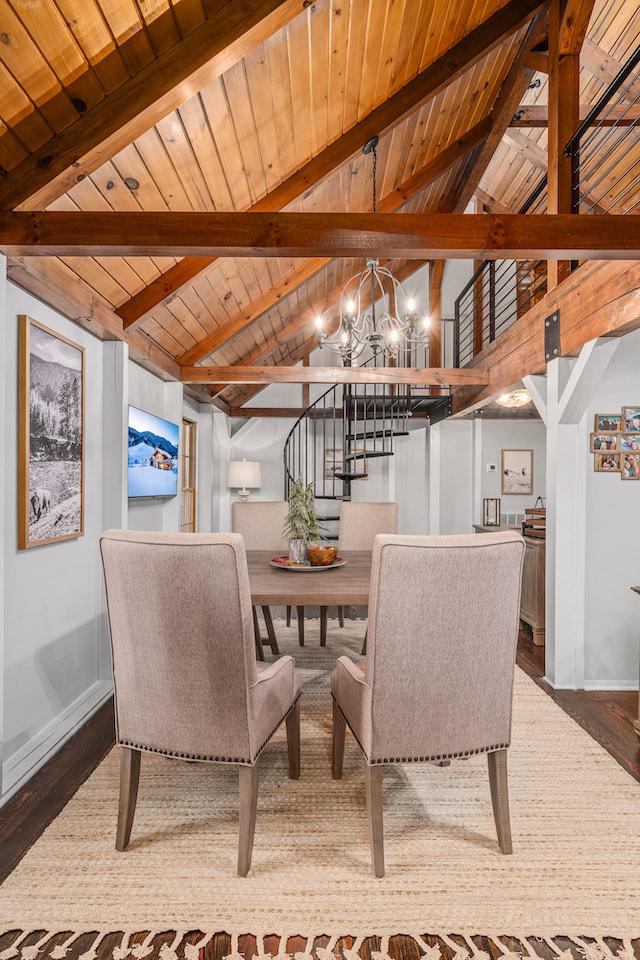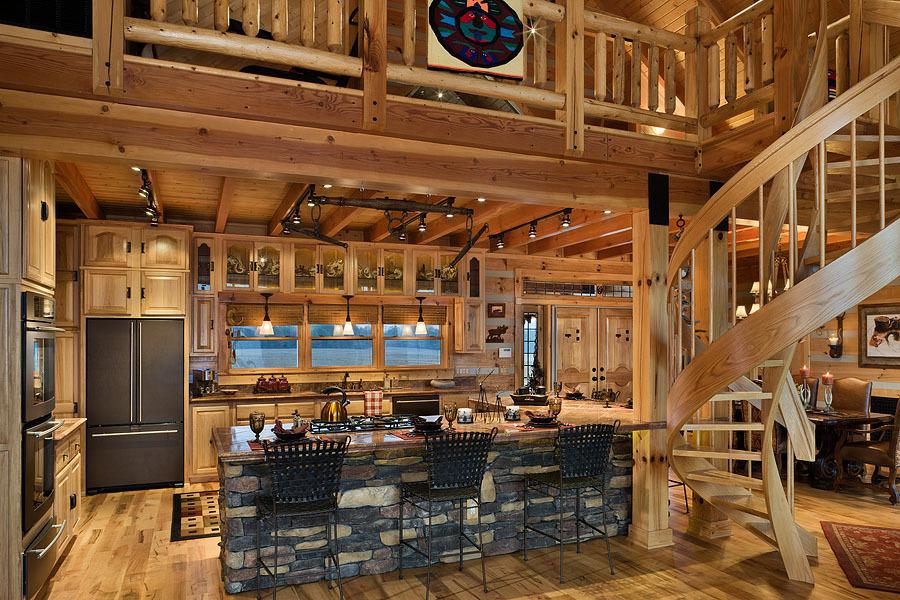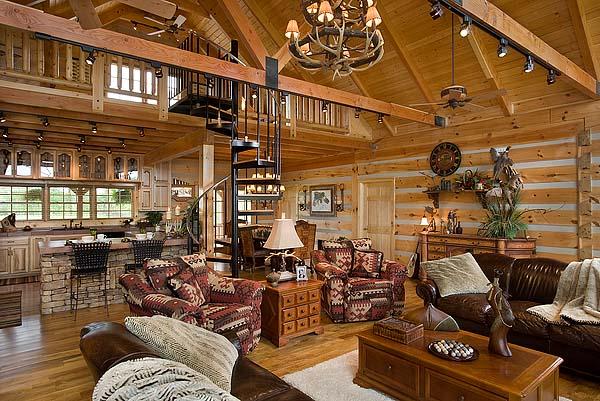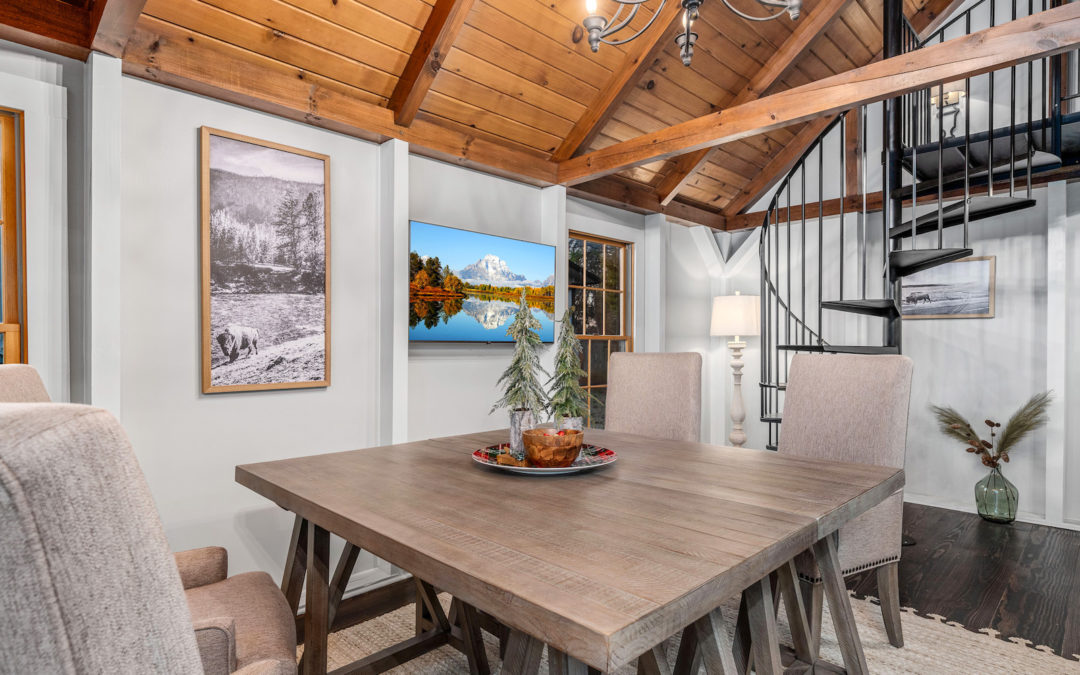Spiral staircases, either wood or metal, are a popular choice for both residential and commercial buildings because of their compact size, stylish design and durability. WhenHonest Abe Log Homes decided to completely renovate its oldest model home, located in Murfreesboro, Tennessee, a traditional staircase was removed, and a metal spiral staircase (above) was installed.
Metal spiral staircases have several benefits.
- The spiral design means they take up less space than traditional straight stairs, making them a good choice for small or tight spaces.
- Metal spiral staircases are known for their durability and resistance to wear and tear. They can withstand heavy loads and are resistant to weathering and corrosion.
- Spiral staircases can be customized to fit the specific needs and design of your space. They can be made in a variety of styles, sizes, and finishes to suit your taste and match your decor.
- Spiral staircases made of metal are easy to clean and maintain, and they do not require much upkeep.
- Metal spiral staircases can be designed with safety features such as handrails and non-slip treads to reduce the risk of accidents.
 However, there are also some potential drawbacks to consider when choosing a metal spiral staircase. They can be noisy, and the open design may not provide as much privacy as a traditional enclosed staircase.
However, there are also some potential drawbacks to consider when choosing a metal spiral staircase. They can be noisy, and the open design may not provide as much privacy as a traditional enclosed staircase.
Installing a metal spiral staircase can be a complex and challenging process that requires specialized skills and tools. It is not typically a DIY project and is best left to professionals with experience in installing metal staircases.
There are several factors that can affect the ease of installation, such as the size and complexity of the staircase, the design and materials used and the layout and structure of the building.
Professional installers will follow a series of steps to ensure that the staircase is properly installed and meets all safety and building code requirements, which include:
- Planning and preparation: This involves reviewing the design and dimensions of the staircase, as well as the layout and structure of the building. The installer will also need to gather the necessary tools and materials, including metal framing, treads, handrails, and any other components.
- Assembly: The installer will assemble the different parts of the staircase according to the manufacturer’s instructions, including the central column, treads, handrails and any additional features such as balusters or lighting.
- Installation: The installer will then install the staircase in the designated location, attaching it to the floor and ceiling or wall as needed. They will also make any necessary connections for electrical or lighting components.
- Finishing: The final step is to finish the staircase with any necessary touches such as painting, staining or sealing the metal to protect it from corrosion.
In the past Honest Abe worked with a family who built not one but two log homes, each with a spiral staircase. One was metal and the other was wood. Both were beautiful.

The DeSocio residence has a wooden spiral staircase.

The DeSocio’s first cabin had a metal spiral staircase.




